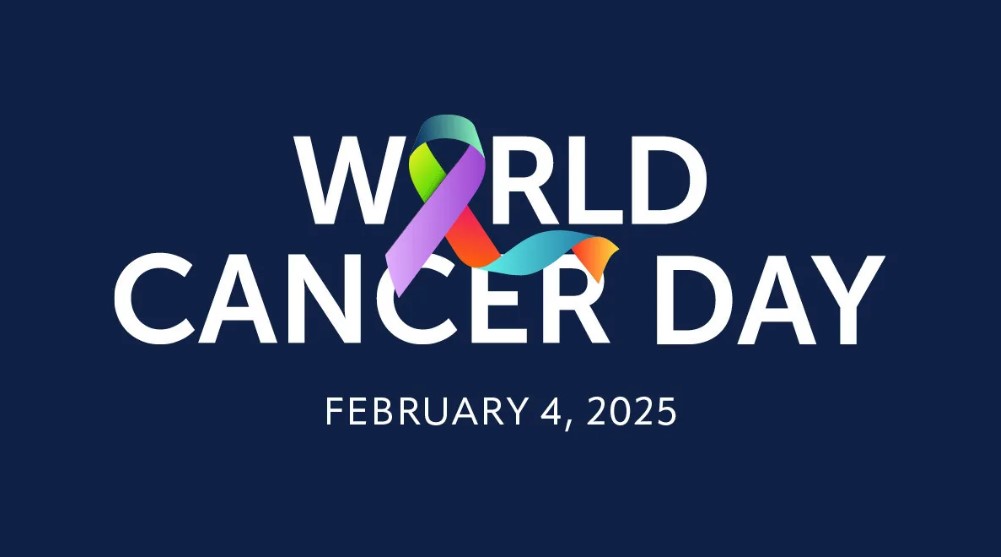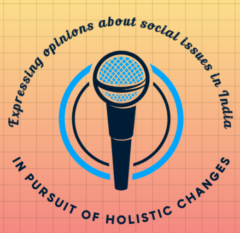
World Cancer Day 2025 is upon us, and this year’s theme is more relevant than ever. With the focus on cancer care in India, we must unite to address the growing challenges posed by this disease. Over 1.57 million new cases are expected this year alone. This alarming statistic highlights the urgent need for effective prevention strategies and improved treatment options across the country.
The theme “United by Unique“ emphasizes that every patient’s journey with cancer is distinct. It calls for personalized care tailored to individual needs. In a diverse nation like India, where socio-economic factors play a significant role in healthcare access, understanding these unique journeys is essential. By fostering compassion and innovation in our approach, we can create a more inclusive healthcare system.
As we explore the current landscape of cancer care in India, we will delve into historical trends, government initiatives, modern treatment options, and successful screening programs. Together, we can raise awareness and inspire action to combat cancer effectively.
Historical Trends: Cancer’s Growing Footprint
India has witnessed a dramatic rise in cancer cases over the past few decades. In 2022 alone, approximately 1.5 million new cases were reported, with projections indicating a 12.8% increase by 2025. This trend underscores the urgent need for comprehensive strategies to tackle cancer prevention and treatment. States like Kerala report 135.3 cases per 100,000 people, while Uttar Pradesh sees around 2.1 lakh cases annually, revealing significant regional disparities.
The types of cancers affecting different demographics also tell a compelling story. For instance, breast cancer accounts for 33% of all female cancers, while lung cancer is most prevalent among men at 11%. Late detection remains a critical challenge, particularly for cervical cancer in rural areas where access to screening is limited. Understanding these statistics helps us grasp the magnitude of the issue and highlights the need for targeted interventions.
As we reflect on these historical trends, it’s crucial to recognize that early intervention can save lives. While urban areas may have better access to diagnostic facilities, rural regions often lag behind. Therefore, increasing awareness about symptoms and encouraging regular check-ups can make a significant difference in survival rates.
“United by Unique”: Personalized Cancer Care in India
The theme “United by Unique” takes on new meaning as we explore personalized cancer care in India. This approach recognizes that no two patients are alike; each requires tailored treatment plans based on their unique circumstances. Dr. Ulrika Kågström from the Union for International Cancer Control (UICC) aptly states, “Every patient’s journey is distinct.” This sentiment drives innovation in oncology as healthcare providers strive to offer compassionate and individualized care.
Government initiatives play a vital role in this transformation of cancer care in India. The Ayushman Bharat scheme aims to provide affordable healthcare coverage for over 50 crore Indians, ensuring that even those from economically disadvantaged backgrounds can access essential treatments. However, challenges remain—states like Bihar struggle with inadequate screening facilities compared to more advanced regions like Kerala, where awareness campaigns flourish.
Real-life stories highlight the impact of personalized care on patients’ lives. Consider the journey of a breast cancer survivor from Delhi who underwent immunotherapy after her diagnosis. Her experience not only showcases the advancements in treatment but also emphasizes the importance of empathy in healthcare. When patients feel understood and supported, they are more likely to engage actively in their treatment journey.
Government Policies: Prevention to Treatment
The Indian government has implemented several effective policies aimed at reducing cancer incidence and improving treatment outcomes across the nation. The National Programme for Prevention and Control of Non-Communicable Diseases focuses on raising awareness about lifestyle-related risks such as tobacco use, which contributes to nearly 30% of oral cancers in the country. By targeting these preventable risk factors, we can significantly reduce the burden of cancer.
Additionally, state-subsidized HPV vaccines mark a crucial step toward preventing cervical cancer among women. These vaccines have become increasingly accessible across various states, helping protect future generations from this deadly disease. However, while urban areas see higher vaccination rates, rural regions still face challenges due to lack of awareness and infrastructure.
Moreover, initiatives like Ayushman Bharat have made advanced treatments more accessible than ever before. With over 20,000 hospitals now offering chemotherapy under this scheme, patients no longer need to travel far for essential care. However, it’s essential that we continue advocating for improved access in rural areas where healthcare resources remain scarce.
Prevalence Trends: State & Gender Insights
Understanding state-wise prevalence trends helps us identify where interventions are most needed within cancer care in India. Here’s a snapshot of recent statistics:
| State | Cases/100k | Top Cancers |
|---|---|---|
| Kerala | 135.3 | Breast, Lung |
| Mizoram | 121.7 | Stomach, Cervical |
| Uttar Pradesh | 85.5 | Oral, Lung |
These numbers reveal significant disparities across states and demographics within cancer care in India. For example, women face higher rates of breast (33%) and cervical (12%) cancers compared to men who battle lung (11%) and oral (10%) cancers more frequently. The data clearly shows that gender plays a crucial role in determining which types of cancers are most prevalent.
Age also influences cancer risk significantly; around 60% of cases occur among individuals aged 40–64 years. Prostate cancer becomes more common after age 65 as well. By understanding these trends better, we can tailor prevention strategies that target specific age groups effectively.
Engaging communities through awareness campaigns can help bridge these gaps further. Encouraging conversations about symptoms and risk factors can empower individuals to seek timely medical advice when needed.
Modern Treatments: Global Edge for Cancer Care in India
India has made remarkable strides in modern cancer treatments over recent years—often at costs significantly lower than those found in Western countries. Robotic surgeries are now commonplace in major hospitals like AIIMS Delhi; they reduce recovery times by about 30%, allowing patients to return home sooner while minimizing complications.
Immunotherapy has emerged as a game-changer for Stage-4 cancers too; it enhances survival rates dramatically compared to traditional methods alone. Dr. Randeep Singh from AIIMS emphasizes this shift: “We’ve treated over 500 patients using immunotherapy successfully.” Such advancements position India as a leader in innovative oncology solutions.
Moreover, indigenous technologies have played an essential role in making treatments affordable for many families facing financial constraints due to high medical costs abroad—CAR-T therapy costs around one-tenth compared to similar treatments available outside India! This affordability ensures that cutting-edge therapies are within reach for more patients than ever before.
Screening Successes & Gaps
Screening programs have proven effective in reducing mortality rates associated with certain cancers across India—yet gaps still exist that need addressing urgently! For instance, Tamil Nadu leads with its oral cancer screening program that reaches over 1 million individuals annually, showcasing how proactive measures save lives through early detection.
In contrast, Mumbai has implemented mobile mammogram vans targeting underprivileged communities; however, states like Bihar continue struggling with low screening uptake due largely to lack of awareness about available services or financial barriers preventing access altogether.
Awareness campaigns must ramp up nationwide! Did you know only about 20% of women understand HPV’s link to cervical cancer? Increasing education around preventive measures will empower more individuals toward proactive health choices while fostering community engagement around screenings!
Holistic Changes: A 5-Point Plan
To truly revolutionize our approach toward cancer care in India by 2025 requires holistic changes across multiple fronts:
- Prevent: Enforce stricter regulations on tobacco advertisements while subsidizing HPV vaccines nationwide.
- Detect: Establish mobile clinics targeting rural areas alongside AI-based symptom checkers accessible via smartphones.
- Treat: Increase funding for PMJAY programs while training more oncologists specifically focused on rural healthcare delivery systems.
- Empower: Create survivor-led support groups within communities alongside mental health initiatives aimed at addressing emotional well-being post-diagnosis.
- Innovate: Foster public-private partnerships focused on research & development hubs while establishing genome mapping labs nationwide!
Dr. Mansukh Mandaviya aptly states: “Unity needs equity.” By implementing these changes collectively as citizens committed toward improving health outcomes together—we can transform lives!
Conclusion: Your Role in 2025’s Fight
As we reflect on World Cancer Day 2025’s theme—“United by Unique,” it becomes clear that each one of us plays an integral role within this fight against cancer! Our collective efforts toward raising awareness about prevention strategies will save countless lives moving forward!
So what can you do? Start by booking your screening today! Share this blog with friends or family members who may benefit from understanding their risks better! Together let’s conquer cancer—one step at a time!

Cancer is a lifestyle related issue.
The single most important factor is the STRESS. Today we are ‘busy’ for not able to live normally – eating, sleeping, relaxing etc.
The lure of money makes us to neglects LIVING.
The reason for higher prevalence of breast cancer in women is due to their lifestyle. There is no female who does not have a black coloured bra. Black absorbs heat and retains it. In the long run this heat radiation induces uncontrolled cell division. Wearing of tight fitting and padded bras is another reason.
As for the lung cancer, the stress in men drives them to have a puff often. Verry young girls and women have started smoking these days in order to show that they are liberated and free and equal to men.
In the movies, there is a waring in very small fonts that smoking is injurious to health. At the same time there are any number of scenes that show men and women smoking. There should be stricter guidelines laid down by the censor board.
In men prostate cancer is more prevalent especially in seniors. the reason is that the sexual activity (ejaculation) declines in old age for various reasons – may be because of diabetes, bladder and rectal issues, or because of loneliness and stress. Continuing normal sexual activity is important at old age.
Avoiding stress and having a positive attitude will make us remain healthy.
Thanks Joseph sir, for your valuable inputs!